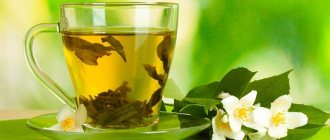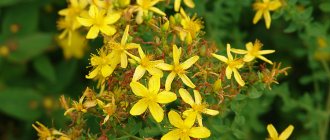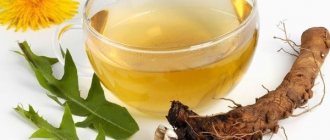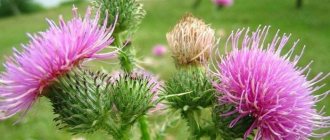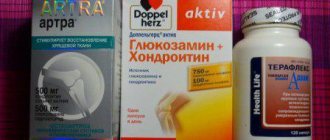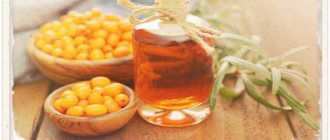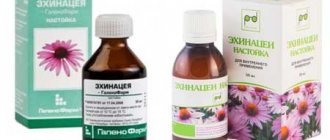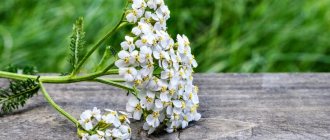People say that this plant restores lost youth and delays old age, and is capable of raising one’s feet and instilling vitality in a person exhausted by illness and close to death.
In fact, science neither proves nor disproves this. But even traditional medicine has recognized that the red brush plant has special properties to inhibit the growth of malignant cells, influence a wide range of diseases and cure them. Let's get acquainted with its medicinal properties and contraindications.
Red brush is the popular name of the plant. Why is the plant called that? There are several versions. Some argue that because of the inflorescence, the shield looks like a brush, and it is red because the corolla can be painted in this color.
Other botanists are inclined to believe that the name was given because of the red root of this plant, and they are called a brush only because infusions and decoctions of this plant sweep away all sores from the body, like a brush.
But if you dig up a flowering plant along with its roots, it will become clear why people began to call it that way. Look at the photo below.
Description
Red brush - Rhodiola cold. Its name from Latin (Rhodiola quadrifida) into Russian is translated differently in various sources: Rhodiola quadrifida (four-petalled, four-cut).
This is a medicinal plant of the Crassulaceae family. One specimen usually consists of several stems of small height - from 15 to 30 centimeters. Each stem is densely covered with narrow dark green leaves and resembles a brush with sparse bristles - hence the popular nickname. The cold brush is called “red” for the color of its fruits and roots, due to the content of anthocyanins. The Red Brush blooms with medium-sized yellow-green, sometimes yellowish flowers, which are located at the crown of the stem and collected in inflorescences. It is found quite rarely in nature; many places where it grows are protected. Rhodiola cold grows in Pakistan and Kazakhstan. There are specimens of the Red Brush in China and Mongolia. In Russia, the Red Brush prefers to climb higher, into the Sayan, Tyva, and Altai Mountains. Almost all of the domestic Red Brush is harvested in Altai; the local nature is ideal for its growth: harsh cliffs and rocky slopes, the banks of mountain rivers and deep crevices are the favorite places of this unique plant in every sense.
Contraindications for use
Rhodiola quadrupartum preparations are not recommended for use in:
- high blood pressure (above 180/100);
- individual intolerance to the plant;
- feverish conditions;
- nervous overexcitation;
- pregnancy and during breastfeeding;
- menstruation (except for heavy bleeding).
During therapy with red brush preparations, you should not drink alcoholic beverages and follow a low-fat diet. It is prohibited to simultaneously use Rhodiola preparations and hormonal agents (synthetic or plant phytohormones).
Rhodiola preparations have a pronounced systemic effect, so their use must be coordinated with your doctor.
Preparation and storage
Since Red Brush is difficult to find in significant quantities, it is not easy to prepare. It grows in remote mountainous areas, usually in very modest numbers in groups. Coming across large thickets of Red Brush is an almost unattainable dream for an herbalist.
For use in herbal medicine, the root of the plant is required. It is the wide root of the Red Brush, going deep into the ground, that allows the plant to survive in the harsh mountain climate, sucking water from distant layers of the soil.
The flowering period of the Red Brush is the first two months of summer. After this, it is time to harvest the plant - and it lasts until the fruit appears. The rhizomes and roots of Rhodiola cold are dug out by hand, and then thoroughly cleaned, washed and dried. Rooms with good air circulation are suitable for drying. It is also possible to dry the roots in the oven at low temperature. To obtain the highest quality raw materials, it is recommended to dry them immediately after collection.
The finished raw materials can be stored for 24 months - during this period the Red Brush retains its healing properties. You can place the raw materials in closed birch bark containers; tin containers with lids are also suitable.
Red brush: healing properties for women
Preparations from Rhodiola quadrifidum extract are used in therapy:
- female reproductive system (mastopathy, infertility, fibroids);
- male reproductive system (prostate adenoma and hyperplasia, oligospermia, male infertility);
- endocrine system (toxic goiter, adrenal diseases).
The herb red brush is popularly called Siberian ginseng for its mild tonic effect, adaptogenic and immunostimulating properties.
The multicomponent composition of the plant, in which unique substances characteristic only of it are found, also determines the multidirectional, multifunctional effect of Rhodiola.
The extract obtained from the roots and rhizomes of the red brush has a pronounced effect:
- anti-inflammatory;
- antibacterial;
- immunostimulating;
- hemostatic;
- normalizes metabolic processes and hormonal balance;
- improves energy exchange in muscle tissue and the central nervous system.
In official and traditional medicine, the root of the red brush is used, since it is in it that the plant “stores” the maximum amount of active substances.
- Anthocyanins are substances that cause the color of plant parts. They have antiviral, antimycotic effects, reduce inflammatory reactions and oxidative stress in the intestines, and increase the barrier functions of the gastrointestinal tract.
- Anthraglycosides – accelerate the movement of gastrointestinal contents and have laxative properties.
- Sterols - reduce the concentration of cholesterol in the blood, block autoimmune reactions, improve the functions of the cardiovascular system.
- Flavonoids are a large group of substances that have antitumor, angioprotective (protects and strengthens blood vessels), and antihypertensive effects.
- Tannins – have astringent, reparative, anti-inflammatory properties.
- Essential oils are a natural antiseptic, immunomodulator, and bacteriostatic.
- Organic acids - normalize metabolism, improve tissue trophism, reduce the level of “bad” cholesterol, and stimulate hematopoiesis.
One of the main bioactive substances of Rhodiola, the glycoside salidroside, has oncoprotective, anti-inflammatory, anti-infective and adaptogenic effects.
In addition, Rhodiola contains a significant amount of microelements:
- manganese;
- chromium;
- nickel;
- molybdenum;
- silver;
- zinc;
- cobalt.
In recent decades, scientists from Russia, Japan, and Germany have begun to study the properties of red brush. The Russian pharmacological industry has already produced a number of herbal medicines based on Rhodiola quadrupartite. For example, herbal tea and dragees from (Russia, Moscow), used for the treatment of gynecological pathologies. A (Ukraine, Nikolaev) produces the Energia phytocomplex to normalize metabolic processes.
Researchers from Poland obtained encouraging results from the clinical use of Rhodiola quadrifida preparations. They tested the effectiveness of using an alcohol tincture of the plant's roots for cancer.
It has also been established that the red brush is an effective remedy for diseases of the cardiovascular system, anemia, and leukemia.
Usage history
The tradition of healing with preparations from the Red Brush goes back a long way. Among the herbalists of the Altai Mountains, there are legends about the Red Brush; the plant is revered as a gift from the gods to people. Healers say that the Red Brush acts almost magically, helping against many different diseases, not just relieving symptoms, but eliminating the causes of the disease and healing the body at the deepest level. They say that taking the Red Brush makes a person younger, restores lost strength, and reveals reserves of internal energy that the patient had not previously suspected. Shamans can perform special rituals in which the Red Brush is involved - after this a person becomes protected from illnesses and troubles for a long time.
Due to its rarity, Rhodiola colda is included in the Red Book of some regions - for example, in the Republic of Sakha and Buryatia, and is protected in some reserves. It is also recorded in the book “Rare and Endangered Plants of Siberia.”
Since the scale of harvesting the Red Brush is quite small, in Russia it is considered a plant little studied in medical science. However, doctors from China and Europe are showing great interest in it. Their research shows, in particular, the effectiveness of the use of Rhodiola cold in the treatment of certain oncological diseases. We can expect that in the very near future the scientific world will start talking about this plant. The main application in modern herbal medicine is in gynecology.
Contraindications and side effects
Separately or as part of a collection, use is not recommended for:
- stomach diseases;
- individual intolerance;
- elevated temperature;
- pregnancy and feeding;
- obstruction of the fallopian tubes;
- excessive excitability;
- changes in blood pressure.
It is not recommended to take red brush simultaneously with hormonal medications containing phytoestrogens.
During treatment, the consumption of alcoholic beverages, fatty and heavy foods is prohibited.
During treatment, side effects may occur due to improper dosage. Drowsiness, mental retardation, and allergic reactions may occur. Therefore, you should strictly follow the dosages prescribed by your doctor and stop using immediately if side effects are detected.
Chemical composition
If you “disassemble” a medicinal plant into its elements, you will find many valuable components: not only proteins, fats and carbohydrates, but also minerals that are important for the proper functioning of organs. Almost half of the periodic table is extracted by the Red Brush from the mountain soil and accumulates in the roots: chromium, which regulates sugar levels; copper, necessary for the synthesis of hemoglobin; zinc, which affects hormonal balance. This natural treasure contains cobalt, manganese, nickel, the noble metal silver and even a representative of the group of rare metals - molybdenum. Rhodiola contains cold waxes, tannins, sterols and natural sugars. Valuable Essential oils, phenols, several Organic acids also contribute to the biological value of Red brush. Glycosides are of particular value - tyrosol, tricetin and salidroside (also called, by analogy with the scientific name of the plant, rhodioloside). Salidroside is “responsible” for the amazing talent of the Red Brush to eliminate inflammation, fight infections and malignancies, as well as exhibit adaptogenic properties and normalize hormonal balance, and at the same time metabolism. Salidroside activates the thyroid gland, helps the functioning of the adrenal glands, prostate and ovaries. Anthocyanins in Rhodiola rosea provide prevention and therapeutic effect against bacteria, as well as fungi and viruses.
Use since ancient times
The fact that many girls resort to traditional methods of treating infertility is primarily due to the failure of using medications. For conception, the hog uterus and the red brush are actively used, the joint use of which is considered an effective way to fight for the desired result.
Since ancient times, if a woman was unable to get pregnant, healers and herbalists advised her to drink infusions of medicinal herbs. The most common among them today are considered to be sage, hogweed and red brush. Moreover, the latter is used to create a good environment for the others to act.
Application in medicine
The red brush is famous for its ability to strengthen and stimulate the body's immune defense, improve tone and give a person good health. Its use restores youth and prolongs the period of active enjoyment of life. Red Brush preparations are often included in recommendations for patients who have undergone surgery or are recovering from serious illnesses - to give fresh strength and cleanse the blood of toxins. Consumption of the plant leads to an increase in hemoglobin levels and the elimination of anemia.
For cardiovascular and nervous diseases
Rhodiola colda is known as a natural remedy for supporting cardiovascular health. It is good for fighting atherosclerosis and other ailments. Taking teas and decoctions from the Red Brush leads to normalization of blood pressure. Many doctors advise giving the Red Brush to patients to reduce intracranial pressure and use it to relieve spasms of cerebral vessels. It provides nutrition to the brain during concussions and promotes rapid recovery. The Red Brush is also good for problems with sleep, for combating neuroses - it can have a calming effect and help cope with daily stress.
For infertility
Very often, the Red Brush is used to treat infertility and all related ailments that are the causes of this condition - both in women and in the stronger sex.
Among the gynecological diagnoses that are indications for the use of Rhodiola cold are fibroids, fibroids, mastopathy. The Red Brush helps to recover from cysts and polyps, as well as to establish the menstrual cycle, make it regular and eliminate menstrual pain. It has the ability to fight endometriosis and erosion, and also has hemostatic properties.
Rhodiola cold comes to the rescue even during such a difficult period for a woman as menopause. Its regular use helps reduce the so-called hot flashes, relieves the feeling of heat, promotes restful sleep and calms the nerves. The red brush has a beneficial effect on diseases of the liver and kidneys; it is recommended for pyelonephritis, various inflammations, cystitis, as well as for restoring health in cases of dysbacteriosis.
Adaptogenic properties
There is evidence that Rhodiola cold helps faster healing of bones in fractures, and is able to restore health after serious injuries. It is an integral part of herbal remedies prescribed for epilepsy and beneficial for leukemia.
For oncology
For oncological diseases, and in general in the case of detection of tumors of various origins, including tumors of a benign nature, the Red Brush is an important component of therapy. There is evidence that it stops the growth of malignant cells, and at the same time gives a person the ability to withstand unfavorable factors and stimulates one’s own resources to fight the disease. A slight tonic effect helps the patient feel more cheerful and does not succumb to stress.
Taking hormones
The most important and popularly known property of the Red Brush is its ability to regulate hormonal levels and treat various disruptions and endocrine pathologies. Herbalists recommend it for problems with the thyroid gland, in particular goiter, for difficulties in the functioning of the adrenal glands and inflammation in the lymph nodes. The red brush is indispensable for the treatment of many diseases that affect men. It is recommended for prostate adenoma, prostatitis, and oligospermia. Her water decoctions and alcohol tinctures are an excellent remedy for infertility problems. A pleasant addition to the purely therapeutic effect is that Rhodiola cold, normalizing men's health, increases potency. And, by the way, in women, the Red Brush cures frigidity caused by physiological reasons.
Use with other plants
Like many medicinal herbs, the healing power of Red Brush increases significantly if it is used in the right combinations with various medicinal plants - for this purpose the collection must be compiled by an experienced herbalist.
Frequent “neighbors” of Rhodiola cold in restorative preparations are its “relative” - Golden root, as well as Eleutherococcus, Schisandra and Maral root. Collecting Aralia and Zamanikha can also increase your defenses. When treating endocrine disorders, Red Brush is often combined with White Cinquefoil - combining them allows you to quickly put your hormonal levels in order.
And to combat typical female ailments and normalize the functioning of the genitourinary system, the alliance with the Red Brush is formed by Borovaya uterus and Wintergreen roundifolia - but this requires adherence to certain schemes and strictly verified breaks in herbal medicine.
Due to the fact that Rhodiola colda has a phytoestrogenic effect, it is prohibited to use it when taking hormones and contraceptives, as well as some medicinal plants that have similar effects. Contraindications to taking Rhodiola cold are also hypertension, excessive nervous excitability, elevated body temperature, pregnancy and lactation, and, of course, individual intolerance. In all cases, it is best to consult a specialist.
The Red Brush recipe, also called the “adaptogenic cocktail,” is widely popular. It contains Red brush, Leuzea safflower, lemongrass, aralia, lure and Rhodiola rosea. All components of this “Altai elixir of youth” are taken in equal quantities. To prepare the drug, 2 tablespoons of raw materials per 1 liter of water are required. Pouring the herbs with boiling water in a thermos, they are left to infuse for 8 hours and then filtered. To create strong immunity, this drink is recommended to be consumed for 30 days; it is especially good during periods of viral epidemics, in spring and autumn.
Plant parts used
- Root
Red brush in folk medicine
In folk medicine, the plant is used for various conditions. It is recommended to drink preparations based on red brush when you lose strength. The plant has a tonic effect, enhances mental activity, and improves thinking. A brush is especially useful in autumn and winter, when the blues are tormented and immunity decreases - herbal tea helps with such problems.
With the help of Rhodiola in folk medicine, diseases are treated and painful symptoms are eliminated:
- tumors;
- cystitis;
- both female and male infertility;
- traumatic brain injuries;
- migraine, etc.
The plant helps in post-operative recovery. When using Rhodiola, the healing of injured areas on the body improves, and fractures heal better.
the plant helps to cope with female pathologies and preserve youth and beauty
For women's diseases
The plant is recommended for use for:
- endometriosis;
- menstrual irregularities;
- inflammatory processes caused by bacteria, fungi;
- functional ovarian cyst;
- polycystic disease;
- cervical erosion, etc.
Healing properties for men
The red brush has proven itself not only in the treatment of female diseases. It is also useful for men. One of the problems that the plant helps with is prostatitis. With this disease, the prostate gland becomes inflamed; The causes can be both infectious and non-infectious. If you regularly take Rhodiola for prostatitis, it will gradually reduce inflammation, strengthen the immune system, inhibit the growth and development of harmful microorganisms, weaken them and lead to their death.
Another problem for which Rhodiola quadruple is useful is prostate adenoma. In the disease, a benign formation develops from the stromal component or glandular epithelium of the prostate. A factor predisposing to the occurrence of this problem is considered to be an imbalance in the physiological balance between hormones. If you take Rhodiola for prostate adenoma, substances from the plant will gradually reduce the inflammatory process and normalize the ratio of sex hormones.
In case of infertility, you can also use the root: the red brush helps to cope with the problem, which is most often caused by a lack of active sperm, the entry of pathogenic microflora into the body, and inflammation of the genitourinary system. Selenium contained in the medicinal plant improves sperm quality. By acting on sperm, it makes them more active. Other beneficial substances from Rhodiola fight inflammatory processes, strengthen the immune system, thereby creating a barrier to pathogenic microorganisms.
produce red brush extract in tablet and capsule form
Recipes
For a plant part - Root
General recipe.
Pour 1 tablespoon of chopped root into 300 ml. water, boil for 15 minutes in a closed enamel container over low heat, leave for 1 hour, strain. Take 1/2 cup 3 times a day, 30 minutes before meals, adding 1 teaspoon of natural honey. Course 30-45 days.
Tincture. The tincture relieves the feeling of heat during menopause, soothes, improves sleep, and helps with benign and malignant neoplasms. The tincture is also used by men for prostatitis and prostate adenoma.
Pour 50 grams of crushed root into 0.5 liters of high-quality vodka, leave in a dark place in a dark glass container for 30 days, shaking occasionally, strain. Take 30-40 drops 3 times a day, 30 minutes before meals. Course 30 days. Break for 10-15 days and repeat the course.
Douching. For ureaplasmosis, candidiasis, gardnerellosis, endometriosis, colpitis, vulvovaginitis, erosion, fibroids, various inflammatory diseases and to normalize the vaginal microflora.
Dilute 1 teaspoon of tincture in 0.5 liters of warm boiled water. Douche morning and evening for 10-15 minutes (try to keep the solution inside as long as possible). The course is 7 days, then a 7-day break and, if necessary, repeat 2-3 such courses.
Use by those wishing to become pregnant
It is imperative to visit your doctor before starting to use herbs such as hogweed and red brush. Combined use (reviews of it are given in the article below) is prescribed for infertility for a course of treatment of 3 to 6 months. During periods of heavy menstrual flow, you can take a break.
This herb can be taken for conception in one of the following ways:
- douche with infusion every day;
- drink infusions.
It should be noted that the selection of a method for treating infertility with herbs, including sage, hogweed, and red brush, directly depends on the stage of the disease. The tincture has more pronounced properties. It is recommended to drink such products before meals. Although in individual cases, when discomfort in the stomach appears after taking the drugs, their use can be postponed to another period of time.
Additional materials
- Red brush for health find
- Causes and consequences of adnexitis
- Natural gift to a woman
- Who does herbs help?
- Tea kopeck for pain and despair (red root)
- Rosehip oil – liquid sun
- Why do people get sick
- Golden root - gold of the Altai taiga
- Cellulite from the point of view of herbal medicine
- Maral root - live without grief
- There is always hope
- The cuff is a witch's weapon
- Use herbs wisely
- Winter lover - tell the disease - enough!
- Green fairies of Gorny Altai
- Questions about herbal treatment
- There is grass for every illness
- Hair is the grass in the flowerbed of our head
- Active ingredients of medicinal plants
- Gonadotropic regimens for gynecological diseases
- Where to find the keys to health
- Maryin root - forget about illness
- Leukemia as a systemic disease
- What herbs can cure mastopathy?
- Causes and consequences of menstrual irregularities
- Phototherapy for hypotension. The approach of Lenin's personal physician
- Sad thrush
- Premenstrual tension syndrome - PMS
Which is better, red brush or hog queen?
To increase the effectiveness of treatment of gynecological diseases, especially neoplasms, preparations of red brush and boron uterus are used. Ortilia unilateral (hog uterus) also contains phytohormones, which provides the same indications for use as the red brush, but the hog uterus is not used if there is a threat of uterine bleeding. Using plants together enhances the effect of each.
Review Reviews
Most reviews about red brush tincture come from women. Many of them note that using the drug, according to the instructions, helps solve the problems of irregular cycles and painful menstruation. A positive effect is observed when using the tincture during menopause.
Regular use reduces the manifestation of the main symptoms of menopause (sweating, hot flashes). Some use the tincture as an adjuvant in the treatment of fibroids, mastopathy, and erosion.
The tincture is often used as a means of cleansing the body, noting its ability to remove waste and toxins. It has been noticed that sometimes while taking the drug there is increased irritability, anxiety, and mood swings. These symptoms are especially pronounced when the dosages prescribed by the instructions are violated.
Instructions for using the red brush
There are general instructions for using rodion. First of all, you need to remember that this is a natural remedy that will not give an effect immediately, but 2-3 weeks after starting treatment and only with a systematic approach to treatment.
The red brush is taken in courses. Doctors recommend drinking medicine from this plant for a month, after which taking a break for two weeks. After three months of such use, a month break follows. For serious illnesses, the entire course must be repeated 2-3 more times.
How to drink red brush?
- First dose: half an hour before breakfast, but no later than nine in the morning.
- Second dose: an hour before lunch.
- Third dose: half an hour before dinner, but no later than seven o’clock in the evening.
Dose of alcohol tincture: 40 drops per glass of water. The decoction is taken 100 ml at a time.
For douching, use a tablespoon of infusion diluted in half a liter of warm water. The procedure is carried out twice a day for a week, followed by a week of break and repetition of the course.
Indications for use in women
The red brush is used for female intimate diseases:
- mastopathy;
- myomatous nodes;
- erosion and ectopia of the cervix;
- endometriosis of the uterus and internal organs;
- irregular menstrual bleeding;
- long cycles;
- lack of ovulation;
- benign tumors of the genital organs.
According to the instructions for use that come with the drug, it helps with atherosclerosis and anemia, leukemia and cerebral vascular spasms, endocrine disorders, as well as pathologies in the adrenal glands and damage to the lymph nodes.
The herbal remedy is considered safer than synthetic compounds. How much to believe this statement is up to everyone to decide for themselves.
However, before resorting to alternative medicine, you should consult a gynecologist.
In case of hormonal imbalance
A decoction of red brush is actively used to treat hormonal imbalance in women.
This condition is manifested by the absence of ovulation, long cycles, scanty or excessively heavy menstrual bleeding.
Infertility forces patients to see a gynecologist with ovarian dysfunction.
Despite the wide range of hormonal drugs for the treatment of such conditions, red brush continues to be popular.
Rhodiola cold is one of the herbal remedies that can regulate hormonal levels.
It contains two hormones that are important for reproductive function. Therefore, while using raw materials, women may notice a significant improvement in their well-being.
Estrogen is the hormone of the first phase of the cycle. It is responsible for the transformation of the endometrium in the uterus and the growth of follicles in the ovaries.
With a lack of estrogen, libido decreases, dryness in the intimate area is felt, the functioning of the ovaries is distorted, and the condition of the skin worsens.
The phytoestrogens that make up the red brush normalize sexual function, increase performance, and improve the condition of the nervous system.
Progesterone is a second phase hormone. It is responsible for maintaining uterine tone and promotes the progression of pregnancy after conception.
With insufficient progesterone production, early miscarriages occur. By taking herbal medicine in the second phase of the cycle, you can prolong the function of the corpus luteum and prevent miscarriage.
As a result of using the herbal remedy throughout the menstrual cycle, natural processes in the ovaries are restored.
In patients, ovulation is established with a full second phase, which normalizes menstrual bleeding and makes it regular.
Ovarian cyst
Red brush herb is prescribed to women to treat ovarian cysts. Most often, patients are faced with functional neoplasms.
Such tumors can go away on their own and reappear over time. To this day, it has not been established what causes the formation of functional cysts.
However, it has been noted that the herbal medicine can influence the growth of benign tumors.
Due to its anti-inflammatory and absorbable effect, the drug causes regression of the functional tumor.
It is worth noting that not all neoplasms are affected by the red brush in this way. Endometrioid and dermoid cysts do not undergo involution under the influence of natural raw materials.
Endometriosis
With endometriosis, excessive growth of the functional layer of the reproductive organ occurs. This leads to uterine bleeding and disruption of the reproductive system.
The formation of cysts and polyps is accompanied by a lack of pregnancy. A fertilized egg simply cannot implant under such conditions.
The lack of progesterone that accompanies endometriosis provokes the progression of the pathology.
In most cases, the disease requires hormonal treatment. However, in the initial stages, you can get by with herbal medicine.
The body recognizes plant hormones entering the body as its own. As a result of treatment, the function of the gonads is not suppressed, but restored.
Erosion
Cervical erosion can be caused by infectious processes or hormonal disorders.
In both cases, plant materials can be used for treatment. Douching with a red brush has a healing effect on the cervix and reproductive organs in general.
Important
Before the procedure, take tests and make sure that there are no infectious antigens in the vagina.
Douching can also be replaced with baths. The glycosides and essential oils that make up the plant have an antiseptic effect.
We recommend you learn: Increasing testosterone levels is a delicate matter
Tannins and bioflavonoids relieve inflammation. As a result of treatment, the natural regeneration process is accelerated.
Uncomplicated erosion, according to reviews, can be eliminated in just 3-4 weeks.
Polycystic ovary syndrome
The red brush for polycystic disease is used by women who are desperate to cure the disease with medication.
If traditional medications do not help, gynecologists recommend surgery on the ovaries. At this moment, it is worth trying your luck and trying to eliminate the pathology with the help of a herbal medicine.
Chronic disturbance of ovulation and the formation of multiple cysts on the ovaries is accompanied by a decrease in the level of follicle-stimulating hormone.
Excessive production of male hormones reinforces the current situation.
An alcohol tincture of red brush helps reduce the level of male hormones and increases the production of female hormones.
Also, the herbal medicine has a preventive effect against the formation of follicular cysts. As a result of use, a woman may experience spontaneous ovulation.
If this does not happen, then surgical treatment should be performed, and then continue to take the red brush to maintain the functioning of the ovaries.
Cervical polyps
Polyps are called benign neoplasms. They appear on the cervix due to excess secretion of estrogen.
The causes of this condition may be disruption of the endocrine system, suppression of the immune system and infectious and inflammatory diseases.
When using a red brush, the function of the thyroid gland is improved, a natural balance of hormonal levels is established, and immunity is increased.
There is a known case where a woman, getting ready to have a polyp removed, took Rhodiola for 8 weeks. Arriving at the appointed time for the operation, the doctors discovered that the polyp had disappeared on its own.
Endometritis
Endometritis is an inflammatory disease occurring in the uterine cavity.
The pathology is caused by pathogenic and conditionally pathogenic microorganisms, which a red brush will help eliminate.
The approach to treating endometritis should be comprehensive. The drug is taken orally and douching is performed.
The result is the following effect:
- pain syndrome is relieved;
- the level of immune proteins increases;
- new cells are formed, regeneration is enhanced;
- hormonal levels are normalized;
- blood flow improves.
Infusion for menopause
Red Brush drops are indicated for the treatment of menopausal syndrome.
The decline of reproductive function in women occurs after 45 years and is accompanied by a decrease in estrogen production.
The lack of this hormone affects not only the functioning of the genital organs, but also affects the appearance and psycho-emotional state.
The drug containing plant estrogens, painlessly for the body, replenishes the deficiency of the missing substance.
Female infertility
The red brush is not used during pregnancy, but it is used for pregnancy and has positive reviews.
Lack of pregnancy in women is caused by various factors:
- changes in hormonal levels;
- diseases of the endocrine system;
- sexual infections;
- pathologies of the cervix;
- premature ovarian failure;
- adhesions in the pelvis;
- obstruction of the fallopian tubes;
- diseases of the uterine mucosa and muscle layer;
- neoplasms in the appendages.
All described conditions are indications for the use of Rhodiola. Therefore, women who are unsuccessfully trying to conceive a child should take a tincture, decoction or herbal tea.
One way or another, the herbal remedy will have a positive effect on the body and, possibly, speed up the process of conception.
Composition and nutrients
The healing effect of the red brush is determined by its rich chemical composition. This herb is a natural phytohormone containing many elements necessary for the body.
Substances contained in red brush and their beneficial properties:
| Substance name | Properties |
| Molybdenum | Accelerates metabolism, promotes body growth. |
| Chromium | Regulates blood pressure and blood sugar. |
| Copper | Increases hemoglobin levels, stops the development of infections |
| Selenium | Reduces the risk of cancer, softens the symptoms of menopause. |
| Nickel | Necessary for normal metabolism. |
| Manganese | Necessary for insulin synthesis. Strengthens hematopoietic function, improves the functioning of the nervous system. |
| Cobalt | Enhances hematopoiesis. |
| Zinc | Improves the regenerative functions of the body, the functioning of the genital organs in men and women. Stimulates brain activity |
| Tannins | Have an astringent and wound-healing effect, prevent the growth of bacteria |
| Essential oil | Strengthens the immune system and has a sedative effect. Has anti-inflammatory and wound healing properties. |
| Waxes | Strengthens the outer skin and accelerates its healing. |
| Phenols | Strengthens blood vessels. |
| Flavonoids | Regulates blood pressure, heart rate, stimulates the adrenal glands. |
| Sterols | Strengthens the immune and cardiovascular systems. |
| Organic acids | Improve metabolism, promote the elimination of toxins. Accelerate the process of hematopoiesis. |
| Anthraglycosides | Improves intestinal function and gives a mild laxative effect. |
| Glycosides | They stop inflammation, stop the growth of bacteria and fungi, and reduce the risk of cancer. |
What is the characteristic of the component
Red brush is also called Rhodiola colda. The plant is listed in the Red Book of some countries. The decline in numbers is due to industrial collection. The brush is common in rocky areas. Prefers rocky soil. It is believed that it is thanks to this that the natural component has many positive qualities. Occasionally, Rhodiola colda is found in the Alps.
The plant has 65 varieties that are described. The brush is perennial and herbaceous. It grows up to 15 cm in height. It has a well-developed rhizome. Rhodiola contains last year's leaves that are red in color. Thyroid inflorescences are located on the upper part.
The flowering of the plant is typical for summer. This usually occurs in June or July. The name was obtained due to the leaves, which resemble a brush and have a reddish color.
The plant is collected manually. Drying is carried out near the collection site. This helps to preserve the beneficial qualities as much as possible and provide a therapeutic effect.
Raw materials after collection can only be stored for 2 years. After the specified time, the plant’s performance decreases.
Most often used in dried form
How to properly use herbs together
When using boron uterus with another female healer - red herb, some nuances must be taken into account in order to get the maximum benefit from the treatment and not harm the body.
- When treating infertility, first of all, find out your hormone levels. I advise you to take tests for all hormones at once, but it is especially important to take into account the indicators of estradiol in the first half of the cycle, and also progesterone in the second phase.
- Study well all the contraindications to the use of both herbs.
- If you are already taking any hormonal medications, then you should stop using a collection of these herbs. It is also necessary to exclude other plants containing hormones - clover, hops , cocklebur or licorice.
- Don’t expect a quick miracle; usually, treating women’s ailments is a long process. Sometimes you will notice the first results 2 – 4 weeks after the start of the course, but this is not a fact. The usual duration of treatment is from a month to three, or even up to a year.
- Periodically, approximately 1 to 3 months after the start of treatment, monitor hormone levels and do a pelvic ultrasound.
- During menstruation, the use of herbs is not advisable.
- For the entire duration of treatment, exclude alcohol from the menu.
What is important to know when taking herbs together:
- The entire course is divided into 4 stages lasting 2 weeks.
- Between these stages a pause of 2 weeks is required.
Some tips for properly preparing medicinal products from these herbs:
- Do not brew herbs with boiling water; for this you only need hot water at 70 - 80 o C.
- It is correct to make decoctions or infusions only in a water bath; boiling over an open fire will reduce the therapeutic effect of the product.
- For alcohol infusions, it is better to take 40% alcohol, but not vodka.
How to take herbs together
Herbalists often advise alternating both herbs, but believe that the most beneficial health benefits will come from using them together.
I would like to recommend to you several traditional recipes that have been tested by time and have received grateful reviews.
- Tonic infusion. Take one hour before eating, but the last use should not be later than 7 o'clock in the evening, otherwise you will not be able to sleep. Brew a large spoonful of the mixture with a standard glass of water like the most common drink, tea. Drink for two weeks, then pause for the same period, and repeat the treatment again.
- Endocrinology. For endocrinological diseases, you can take both herbs at once, or alternate them, and it is advisable to start treatment from the 5th to the 14th day of the menstrual cycle.
- If there is a low level of the hormone estrogen, a disease of female sexual function, treat in the following order: 1st course - treatment with sage , infusing a teaspoon of the herb in a glass of water (but not boiling water) for a quarter of an hour. Drink a third of a large spoon 30 minutes before meals. And immediately after that, brew and drink boron uterus in the same way.
- Climax. To improve hormonal levels during menopause, take an alcohol tincture of both herbs. Dilute half a teaspoon per glass and drink twice a day. Carry out therapy in two stages for 2 weeks.
- For gynecological diseases - fibroids, cysts, endometriosis and other diseases, herbalists advise drinking the plants separately in courses of a couple of weeks, taking the same pause between doses. Healing takes a long time, sometimes up to a year.
- For gynecological diseases and infertility, douching from a decoction of herbs is very useful. Take a glass of water for 2 large spoons of the mixture and let it stand for three hours. Do douching three times a day, after straining the infusion.
- Menstrual irregularities. In phase I of the cycle, drink the infusion of the brush, in phase II - the uterus. Take a teaspoon three times a day.
- Myoma. Take 30 drops of herbal alcohol tincture three times a day, diluting them a little with water.
Herbal tincture
Most often, a universal aqueous infusion of boron grass with red brush is used, which has proven to be highly effective and well tolerated by the body.
Prepare herbal infusion:
- Heat for half an hour in a water bath, mixed 15 grams. both herbs, pouring them with a full glass of hot water. At the same time, part of the infusion will evaporate, so add cool boiled water so that you again have a glass volume of infusion.
- How to take: if there are no separate recommendations, then drink 1 hour before meals, three times a day, a large spoon. There is no need to store this infusion for more than three days.
- If after completing the full course of therapy you do not experience any improvement, then repeat the treatment one more time, only after taking a break of a month. To supplement the treatment, during a break, drink a course of wintergreen infusion (15 g per glass of boiling water). This plant also enhances the functions of the female reproductive glands.
Alcohol tincture
For 50 gr. Mixed and crushed weed requires half a liter of 40% alcohol. Aged for 14 - 20 days in a darker place. Usual use, if there are no special specifications in the recipe, is 30 drops, diluting them in 50 ml. cool water before meals.
Contraindications to the use of herbs
Herbs may not be suitable for everyone, since there are restrictions on the use of one or both plants at once. Read about some recommendations on how to drink the medicinal mixture correctly at the beginning of the herb - this should not be neglected.
- In the presence of diseases of the stomach and intestines.
- If you have a personal intolerance to one of these herbs.
- People with poor blood clotting.
- With changes in blood pressure.
- With excessive excitability.
- Breastfeeding and pregnancy are also restrictions on the use of herbs together.
- Fever.
I remind you once again that these plants cannot be used together with other hormonal remedies. In addition, an overdose of a medicinal product can cause lethargy, lethargy, drowsiness, heaviness in the stomach or nausea, and headache.
Successful healing to you, my dears. The combined use of the wonderful herbs red brush and boron uterus can sometimes literally perform a miracle, help in conceiving a child and treating diseases. Be healthy! with love... Galina Nekrasova.
Contraindications
There are also few contraindications for Rhodiola cold. However, they must be remembered so as not to harm the body instead of treatment.
The main contraindications are:
- pregnancy (increased risk of premature termination of pregnancy),
- lactation,
- obstruction of the fallopian tubes,
- childhood,
- heart failure,
- mental disorders,
- hypertension (pressure over 180/110).
Like boron uterus, Rhodiola cold should not be taken directly during menstruation. During a course of treatment, medication can be resumed on the 5th day of the menstrual cycle.
Douching
The easiest way is douching. For this procedure, a faster infusion of boron uterus and red brush is prepared. The combined use of these plants in the form of douching for infertility has already helped a huge number of women. But you need to take into account that such a product deteriorates very quickly. Therefore, you will need to prepare a new portion each time. This is a simple recipe with the same proportions:
- a glass of boiling water;
- 2 tablespoons of crushed raw materials.
This infusion solution must be left for a couple of hours. Before you start douching, the infusion must be filtered.
It should be noted that contraindications to the use of boron uterus can also be expressed through various “side” effects, which can manifest themselves in the form of deterioration in health or migraines. If you experience these symptoms, it is best to make an appointment with your doctor immediately.
How to increase the healing properties of the tincture?
Herbal tinctures can be made water-based. To do this, pour 1 tbsp into the pan. l. each dry collection and pour in a glass of hot water. Next, boil for steam for 20 minutes, covered with a lid, and then filter. Tincture of boron uterus.
To ensure that the tincture contains the maximum amount of useful substances, it is made only by steaming, otherwise its beneficial properties will decrease. If the volume is less than 250 ml, then you need to add water. Store in a glass jar in a walk-through place for no more than 3 days.
To make an alcohol tincture, you need to use 40% alcohol. If the alcoholic product has a high strength, it is diluted with water. For 0.5 liters of alcohol you need 50 g of herbs in equal proportions. Infusion takes place in a dark place for 14-20 days, shaking the bottle from time to time so that it mixes and the plants can release their full healing substances. Tincture of red brush.
Range of action: we treat the causes of the disease
In terms of its healing effect on the human body, red brush is not a unique drug; it, of course, has competitors, but there are no analogues!
Scientists put a lot of effort into ensuring that modern medicines fight not the symptoms of diseases, but their causes, so that healing and renewal take place at the cellular level. By the way, unfair advertising of many drugs of dubious properties is also based on such slogans. The use of red brush medicines really helps destroy the disease at its very base. For example, the cause of many long-term diseases is poor circulation. Thus, the red brush normalizes hematopoietic processes, stimulates the heart, restores the walls of blood vessels and relieves painful conditions from which various organs have suffered.
Due to the fact that red brush extracts retain the beneficial natural qualities of the plant, preparations based on it can help people with a wide variety of diseases. Here are the main uses of red brush tincture:
- restoration of immunity, increasing adaptation and resistance of the body to harmful influences;
- beneficial effects of phytohormones on pathological conditions of the male and female reproductive system;
- renewal and restoration of internal structures and functions necessary for a full life of an elderly person;
- gentle removal of toxins and poisons due to high-quality renewal and activation of the “liver cauldron”;
- nutrition of brain cells, stimulation of mental activity;
- improvement of heart function, high-quality prevention of vascular atherosclerosis, blood purification;
- correction of functional disorders in the endocrine system;
- restoration of the body after taking antibiotics, radiation and chemotherapy, restructuring of blood elements, increase in hemoglobin;
- accelerating the healing of damage to tissues, joints and bones, for example, in fractures of varying complexity due to a strong anti-inflammatory effect and enhancing the regenerative function of tissues.
Absolutely amazing results are obtained by using red brush tincture for seemingly irreversible oncological diseases (leukemia, fibroids), mastopathy, and infertility.
A direct consequence of courses of treatment with red brush tincture is a general rejuvenation of the body, because the drug “worked” with literally every cell, healing it from the inside and normalizing the flow of natural rhythms in it. Unfortunately, modern science has not yet found a detailed explanation for this complex phenomenon.
Caution: contraindications
Despite the many advantages and healing effects of treatment, there are a number of serious contraindications that must be taken into account:
- individual intolerance, allergies;
- high blood pressure, heart rhythm disturbances;
- depressive states, increased anxiety;
- hyperfunction of the thyroid gland;
- fever, high temperature;
- period of menstruation, pregnancy and breastfeeding;
- children's age up to 12 years.
Alcohol tincture of red brush is a very strong herbal energy drink, so its use should be under the supervision of a specialist. Symptoms of overdose are low blood pressure, drowsiness, lethargy.
In gynecology
Gynecology deals with the study of diseases of the female reproductive system. These include inflammatory diseases of the genitourinary organs, as well as phenomena associated with menstrual irregularities. These pathologies can be complications or consequences after abortions, miscarriages, or childbirth.
The functioning of the female body largely depends on hormonal levels. This is the name for the ratio of hormones, that is, the production of hormones by certain organs in sufficient quantities. Violations arise due to provoking factors that lead to failures, changes in the structure of different links, and weakening in one of the areas.
Herbal medicine is often a sought-after element in the treatment of gynecological pathologies, because it has multidirectional effects on the body. That is, simultaneously with its influence on the production of hormones, as well as its anti-inflammatory effect, the medicinal infusion calms the nervous system and relieves tension.
Red brush herb tea
Rhodiola-based herbal tea is often used as a preventive measure after treating various gynecological pathologies, as well as to relieve stress, improve sleep quality, and eliminate insomnia. Teas are sold in pharmacies and can also be prepared independently. For home preparation, technologically correctly prepared raw materials of Rhodiola rhizomes are used.
After drying, the roots look like thin brown-red twigs, linked to each other by small bristles. 1 tbsp. pour boiling water over and leave. Drink a glass of the drink throughout the day, topped with honey to improve the taste. The course of therapy is 1 month.
Information! Herbal mixtures with Rhodiola colda are supplemented with various auxiliary components: St. John's wort leaves, hawthorn fruits, horsetail roots. The preparation of mixtures is trusted to professionals, since not all components of plant origin are compatible with each other.
